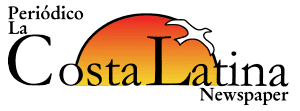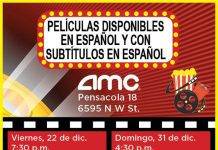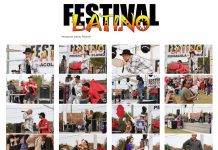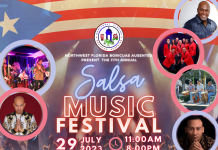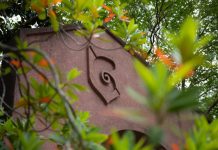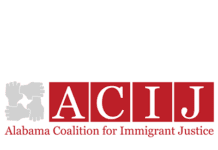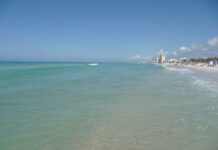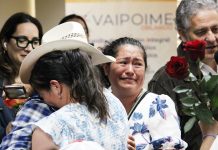Pensacola, Fla – Oct. 21, 2016 – El programa de arqueología de la University of West Florida anunció hoy el descubrimiento de un tercer naufragio de la flota española de expedición del siglo 16 vinculada a Tristán de Luna y Arellano hasta el día de hoy en Pensacola. El descubrimiento se produce a menos de un año después de que arqueólogos de la UWF identificaran el lugar terrestre de la colonia de Luna en un barrio desarrollado en Pensacola, marcandolo como el asentamiento europeo más antiguo por varios años en los EE.UU. El tercer naufragio se encuentra en la bahía de Pensacola, cerca de Emanuel Point I y II, los dos primeros naufragios vinculados a la expedición Luna. Emanuel Point I fueron encontrados por arqueólogos de la Florida Bareau of Archaeological Research en 1992 y más tarde fue investigado por el BAR y el UWF. Emanuel Point II, fue descubierto por el UWF en una escuela de campo de verano en el 2006. El tercer barco, Emanuel Point III, fue descubierto por arqueólogos y estudiantes de la UWF durante el curso de Combined Archaeological Field Methods, el 20 de junio de 2016. Después de la identificación de la colonización en el 2015, el equipo de la UWF fue capaz de reducir el campo de búsqueda de los naufragios restantes durante la escuela de campo de verano en 2016. “Elegimos un lugar poco profundo con un fondo de arena para bucear y dar a los estudiantes un descanso después de que habíamos estado en otra parte de la bahía donde era más profunda y oscura,” dijo el Dr. Greg Cook, profesor asistente de antropología e investigador principal del naufragio Emanuel Point II. “Pensamos que probablemente no había nada allí, pero no habíamos encontrado ninguna anomalía cuando inspeccionamos y decidimos dejar que los alumnos se diviertan investigándolo. Al cabo de dos minutos, los buceadores se acercaron y dijeron que se sentían piedras con las sondas. Por la tarde, se encontraron los primeros artefactos. Dije aquel día: “Ustedes saben, que no debería ser tan fácil.” El equipo de la UWF ha descubierto piedras de lastre, concreciones de hierro y piezas del casco de la nave, incluyendo marcos y tablazón del casco, así como restos de cerámica una vez llevados en el. Ellos recibieron un permiso conjunto del Florida Department of Environmental y el U.S. Army Corps of Engineers para llevar a cabo excavaciones de prueba hasta marzo del 2017 para determinar la extensión del naufragio y el tipo de madera utilizada para hacer la nave, que indicará si era uno de los primeros barcos que se construyó en el Nuevo Mundo. “Tenemos una buena oportunidad de que se trate de un tipo diferente de la nave de Emanuel Point I y Emanuel Point II,” dijo el Dr. John Bratten, director y profesor asociado de antropología y co-investigador principal de Emanuel Point II. “Debido a que se encontró en aguas menos profundas que las otras, podría ser más pequeño, posiblemente lo que llamaban una barca. Este descubrimiento es significativo en la comprensión de la construcción de varcos del siglo 16.” La exploración del programa de arqueología de la flota Luna por la UWF ha sido financiado en parte por una Donación de Categoría Especial por un total de más de $290,000 de la Florida Division of Historical Resources. La donación de contrapartida, adjudicado a la UWF en el 2014, proporcionó los fondos para la facultad, personal y estudiantes de la UWF para realizar trabajos de campo, análisis de laboratorio, la conservación y la preservación de artefactos, la investigación en archivos de España y la difusión pública en todas las estaciones durante dos años. “Este es un descubrimiento muy emocionante y oportuno después de las recientes investigaciones cerca al lugar terrestre de Luna”. dijo el Dr. Timothy Parsons, director de la Florida Division of Historical Resources. “Estoy muy satisfecho de que la división pueda apoyar este trabajo a través de nuestro Special Category Grants Program.” Las investigaciones del campo marítimo por el UWF, incluyen continuar con las inspeciones y excavaciones, se han centrado principalmente en los seis barcos que se perdieron durante un huracán que afectó a la bahía de Pensacola, en septiembre de 1559. La expedición Luna incluidos 1.500 soldados, colonos, los esclavos y Indios Aztecas que viajaban en 11 barcos de Veracruz, México, a Pensacola para comenzar la colonización española de la costa norte del Golfo. El huracán golpeó Pensacola un mes después de su llegada, se hundieron muchos de sus barcos y asi devastando sus suministros de alimentos. Después de dos años, los restos de la colonia fueron rescatados por barcos españoles y regresaron a México. El asentamiento Luna en Pensacola duró desde 1559 hasta 1561, que es anterior a la colonización española en San Agustín, Florida, por seis años, y el asentamiento Inglés en Jamestown, Virginia, por 48 años. “Encontrar el tercer barco es altamente significativo porque confirma que tenemos toda la flota en la bahía de Pensacola,” añadió el Dr. John Worth, profesor asociado de antropología e investigador principal de la colonización Luna. “Los documentos históricos dicen que dos barcos fueron cargados, listos para volver a España. Mientras que teníamos sólo dos naufragios, podría significar que el resto de la flota estaba en otra parte. Ahora sabemos que realmente tenemos la flota, no sólo los dos barcos que pasaron eran de la flota .” El Emanuel Point I se encontró en 1992, y los arqueólogos UWF continuaron las investigaciones hasta 1998 bajo la dirección del Dr. Roger Smith, del Florida State Underwater Archaeologist. En el 2006, los arqueólogos y estudiantes UWF encuentraron el Emanuel Point II. La UWF siguió examinando el segundo naufragio con sus escuelas de campo de verano hasta que los fondos de donaciones recibieron en el 2014. La financiación ha permitido a los arqueólogos de la UWF en trabajar de forma continua en el sitio y la búqueda de los naufragios adicionales durante dos años. La colonización de Luna se identificó en octubre del 2015, cuando Tom Garner originario de Pensacola descubrió la colonia Española y los artefactos Nativos Americanos en un lote residencial de propiedad privada a la vista de los dos naufragios descubiertos en la bahía de Pensacola. La UWF ha continuado las investigaciones en el lugar de asentamiento, ya que el descubrimiento, incluyendo el ofrecimiento de una escuela de campo con base durante el verano del 2016. En conjunto, los naufragios y la colonización de tierras proporcionan una visión única en el asentamiento colonial europeo plurianual mas antiguo en ser identificados arqueológicamente en los Estados Unidos. “Encontraron el tercer barco más cercano a la tierra, mientras estábamos trabajando en una parte inferior de la página de solución”, dijo la doctora Elizabeth Benchley, directora de la Division of Anthropology and Archaeology en el Archaeology Institute. “Mirando el barco encuesta sobre Emanuel Point III, viendo lo cerca que estaba a la tierra e imaginar que era allí donde llegaron al pueblo y bajaron a tierra; se me pone la piel de gallina. Tienes que ser muy fuerte para ponerte en un lugar donde no te imaginas de como era el paisaje en 1559.” La investigación de la UWF relacionada con la expedición Luna es patrocinado en parte por el Department of State, Division of Historical Resources, y el Estado de la Florida. Otros patrocinadores incluyen el UWF Archaeology Institute y el Florida Public Archaeology Network. Para obtener más información sobre los naufragios Emanuel Point y la colonización de terrenos de Luna, visite uwf.edu/luna. UWF archaeology program discovers third shipwreck from Luna fleet Pensacola, Fla. – Oct. 21, 2016 – The University of West Florida archaeology program announced today the discovery of a third shipwreck from the Spanish fleet linked to Tristán de Luna y Arellano’s 16th century expedition to modern-day Pensacola. The discovery comes less than one year after UWF archaeologists identified the terrestrial site of Luna’s colony in a developed neighborhood in Pensacola, marking the earliest multi-year European settlement in the U.S. The third shipwreck was found in Pensacola Bay near Emanuel Point I and II, the first two shipwrecks linked to the Luna expedition. Emanuel Point I was found by archaeologists from the Florida Bureau of Archaeological Research in 1992 and was later investigated by BAR and UWF. Emanuel Point II was discovered by UWF during a summer field school in 2006. The third ship, Emanuel Point III, was discovered by UWF archaeologists and students during the Combined Archaeological Field Methods course on June 20, 2016. After identifying the land settlement in 2015, the UWF team was able to narrow the field of search for the remaining shipwrecks during the summer field school in 2016. “We chose a shallow spot with a sandy bottom to dive to give the students a break after we’d been in another part of the bay where it was deeper and darker,” said Dr. Greg Cook, assistant professor of anthropology and principal investigator of the Emanuel Point II shipwreck. “We thought there probably wasn’t anything there, but had found an anomaly when we surveyed and decided to let the students have fun investigating it. Within two minutes, the divers came up and said they felt stones with their probes. Later that afternoon, the first artifacts were found. I said that day, ‘You know, it shouldn’t be this easy.” The UWF team has discovered ballast stones, iron concretions and articulated hull of the ship, including frames and hull planking, as well as remnants of ceramics once carried on it. They received a joint permit from the Florida Department of Environmental Protection and the U.S. Army Corps of Engineers to conduct test excavations through March 2017 to determine the extent of the shipwreck and the type of wood used to make the ship, which will indicate if it was among the earliest ships to be built in the New World. “We stand a good chance that this is a different type of ship from Emanuel Point I and Emanuel Point II,” said Dr. John Bratten, chair and associate professor of anthropology and co-principal investigator of Emanuel Point II. “Because it was found in shallower water than the others, it might be smaller, possibly what they called a barca. This discovery is significant in understanding 16th century ship construction.” The UWF archaeology program’s exploration of the Luna fleet has been funded in part by a Special Category Grant totaling more than $290,000 from the Florida Division of Historical Resources. The matching grant, awarded to UWF in 2014, provided funding for faculty, staff and students from UWF to conduct fieldwork, laboratory analysis, artifact conservation and curation, archival research in Spain and public outreach in all seasons for two years. “This is an extremely exciting and timely discovery following the recent investigations at the nearby terrestrial Luna site,” said Dr. Timothy Parsons, director of the Florida Division of Historical Resources. “I’m very pleased that the Division can support this work through our Special Category Grants Program.” Maritime field investigations by UWF, including continuing survey and excavations, have mainly focused on the six ships that were lost during a hurricane that hit Pensacola Bay in September 1559. The Luna expedition included 1,500 soldiers, colonists, slaves and Aztec Indians who traveled in 11 ships from Veracruz, Mexico, to Pensacola to begin the Spanish colonization of the northern Gulf Coast. The hurricane hit Pensacola one month after they arrived, sinking many of their ships and devastating their food supplies. After two years, the remnants of the colony were rescued by Spanish ships and returned to Mexico. The Luna settlement in Pensacola lasted from 1559 to 1561, which predates the Spanish settlement in St. Augustine, Florida, by six years, and the English settlement in Jamestown, Virginia, by 48 years. “Finding the third ship is highly significant because it confirms we have the whole fleet in Pensacola Bay,” added Dr. John Worth, associate professor of anthropology and principal investigator of the Luna land settlement. “The historical documents say that two ships were loaded, ready to go back to Spain. As long as we had just two shipwrecks, it could mean that the rest of the fleet was somewhere else. Now we know we really do have the fleet, not just two ships that happened to be from the fleet.” Emanuel Point I was found in 1992, and UWF archaeologists continued investigations through 1998 under the direction of Dr. Roger Smith, Florida State Underwater Archaeologist. In 2006, UWF archaeologists and students located Emanuel Point II. UWF continued to examine the second shipwreck with its summer field schools until grant funding was received in 2014. The funding has allowed UWF archaeologists to work continuously at the site and search for additional shipwrecks for two years. The Luna land settlement was identified in October 2015 when Pensacola native Tom Garner discovered Spanish colonial and Native American artifacts at a privately owned residential lot within view of the two uncovered shipwrecks in Pensacola Bay. UWF has continued investigations at the settlement site since it discovery, including offering a land-based field school during Summer 2016. Together, the shipwrecks and land settlement provide a unique insight into the earliest multi-year European colonial settlement to be archaeologically identified in the United States. “They found the third ship closer to land while we were working on a lower part of the settlement site,” said Dr. Elizabeth Benchley, director of the Division of Anthropology and Archaeology and the Archaeology Institute. “Watching the survey boat over Emanuel Point III, seeing how close it was to land and imagining this was where the people came and stepped ashore; it gives me goosebumps. It’s very powerful to put yourself in a location where you can envision what the landscape was like in 1559.” UWF’s research related to the Luna expedition is sponsored in part by the Department of State, Division of Historical Resources, and the State of Florida. Other sponsors include the UWF Archaeology Institute and the Florida Public Archaeology Network. To learn more about the Emanuel Point shipwrecks and the Luna land settlement, visit uwf.edu/luna.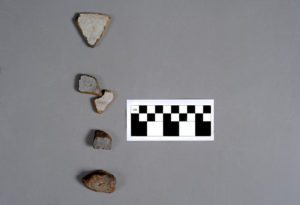
El Programa de Arqueología de UWF Descubre el Tercer Naufragio de la Flota Luna ~ UWF archaeology program discovers third shipwreck from Luna fleet
El Programa de Arqueología de UWF Descubre el Tercer Naufragio de la Flota Luna
Facebook Comments
